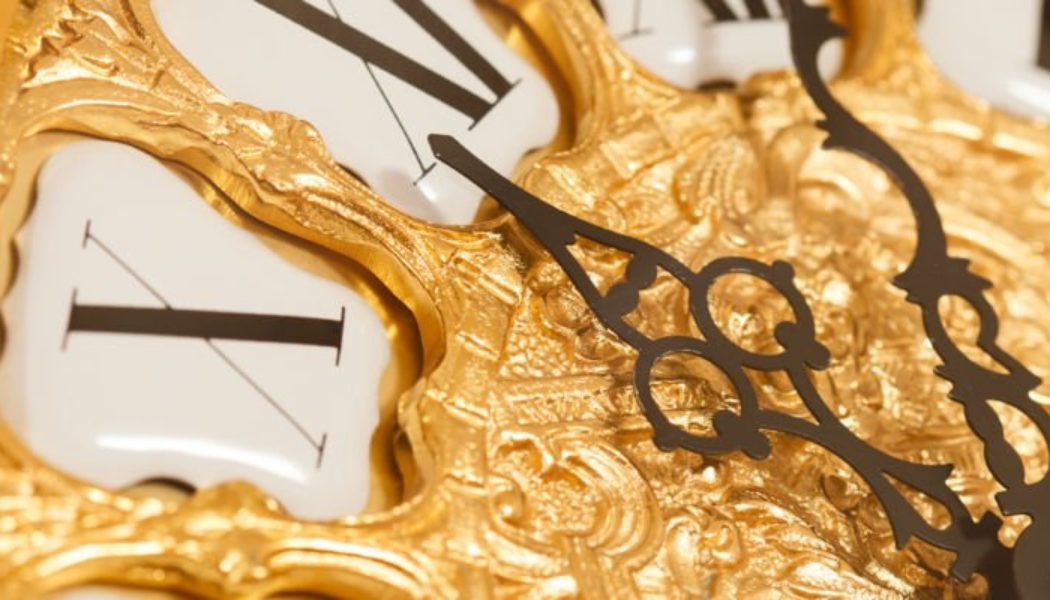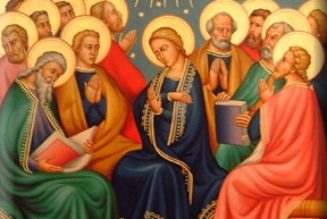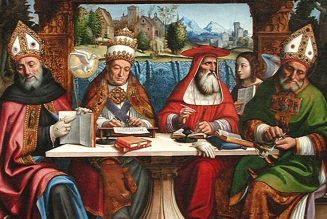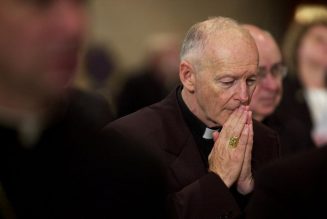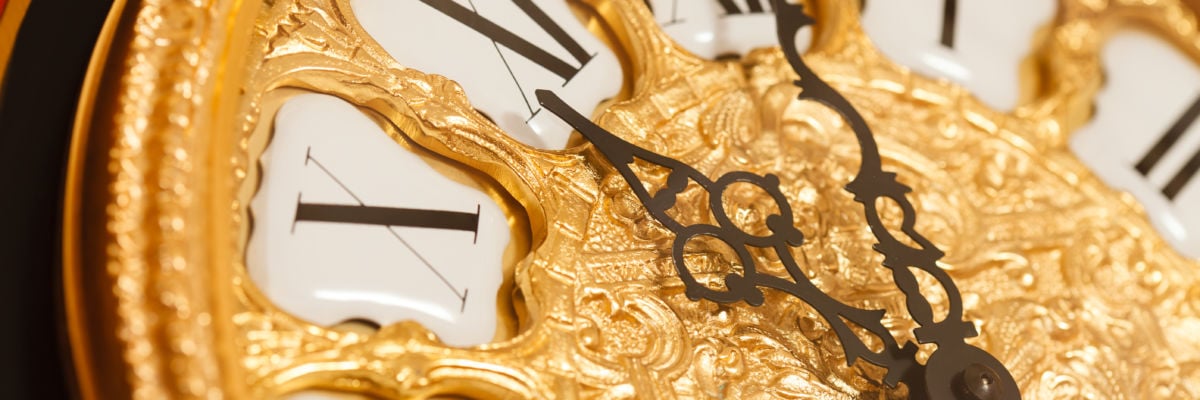
On the night of October 4, 1582, the citizens of Spain and its colonies, Portugal, Poland, and most of Italy went to bed and woke up ten days later.
The peculiar event was not some medieval miracle but was, in fact, an effort by the Church to bring about a badly needed change to time. Having decreed months before that a reform of the calendar was essential for the good of Western civilization, Pope Gregory XIII (r. 1572-1585) implemented a new calendar on the night of October 4. The next day, part of the massive fix of the Julian calendar, was counted not as October 5, but October 15, 1582. The calendar reform proved one of the most important and impressive accomplishments for the progress of Europe in the whole of the Renaissance.
For critics of the Church, the sixteenth century is a seeming treasury of embarrassments for Catholics—from the so-called “bad popes” to the Inquisition to the Protestant Reformation. But the crown jewel for criticism is Galileo and his supposed persecution by an obscurantist, tyrannical, and unenlightened papacy. Lost in much of the rhetoric surrounding Galileo, however, was the immense accomplishment of Pope Gregory XIII in bringing desperately needed changes to the calendar.
The problem has always been the fact that a year cannot contain neatly organized days or months. Put simply, the interval between successive vernal equinoxes (every 365.2424 days) is approximately eleven minutes less than 365 and one quarter days. At the same time, the synodic period of the moon (i.e., the time between each full moon or new moon) is around twenty-nine and a half days, so that twelve months add up to only about 354 days. A calendar that incorporates the movements of both the sun and the moon thus becomes quite a challenge, and people of many civilizations have certainly given it their best shot.
The most influential, not to mention widely adopted, effort to solve the dilemma was the Julian calendar, introduced by Julius Caesar in 45 B.C. to replace the longstanding Roman calendar that had grown hopelessly inaccurate by the use of the lunar year and the intercalary month. His idea, with a little help from Sosigenes, an Alexandrine astronomer, was to create a solar calendar with months of fixed lengths. Rather than try to introduce a gentle change, Caesar instituted what became called the “year of confusion” by adding ninety days to the year to realign the months of the Roman calendar with the seasons. The first Julian year commenced with January 1, 46 B.C., the 708th year from the foundation of the city.
The result was that the average length of the Julian calendar year was 365.25 days. To account as best it could for the subtle but important deviations in the passage of time, every fourth year included an intercalary day to maintain synchrony between the calendar year and the tropical year. Caesar organized the first, third, fifth, seventh, ninth, and eleventh months (i.e., January, March, May, July, September, and November) to have thirty-one days, and the other months thirty, excepting February, which in common years should have only twenty-nine days, but every fourth year thirty days. To keep himself even with his illustrious predecessor, Emperor Augustus added an extra day to August to have as many days as July, which had been named after the first Caesar. So a day was taken from February and given to August; to prevent three months straight of thirty-one days, September and November were reduced to thirty days, and October and December were assigned thirty-one. The additional day every fourth year was added to February, the shortest month. In modern calendars, the intercalary day is still added to February, but as the twenty-ninth.
The Julian calendar remained in use throughout the entire history of the Roman Empire. The Church naturally adopted it in the development of the liturgical calendar. Easter was placed on the first Sunday after the first full moon after the vernal (spring) equinox. Obviously, then, the calculation of the equinox assumed considerable and understandable importance. If the equinox was wrong, then Easter was celebrated on the wrong day, and the placement of most of the other observances—such as the starts of Lent and Pentecost—would also be in error.
As the Julian calendar was far from perfect, errors did indeed begin to creep into the keeping of time. Because of the inherent imprecision of the calendar, the calculated year was too long by eleven minutes and fourteen seconds. The problem only grew worse with each passing year as the equinox slipped backward one full day on the calendar every 130 years. For example, at the time of its introduction, the Julian calendar placed the equinox on March 25. By the time of the Council of Nicea in 325, the equinox had fallen back to March 21. By 1500, the equinox had shifted by ten days.
The ten days were of increasing importance also to navigation and agriculture, causing severe problems for sailors, merchants, and farmers whose livelihood depended upon precise measurements of time and the seasons. At the same time, throughout the Middle Ages, the use of the Julian calendar brought many local variations and peculiarities that are the constant source of frustration to historians. For example, many medieval ecclesiastical records, financial transactions, and the counting of dates from the feast days of saints did not adhere to the standard Julian calendar, but reflected local adjustments. Not surprisingly, confusion was the result.
The Church was aware of the inaccuracy, and by the end of the fifteenth century, there was widespread agreement among Church leaders that not celebrating Easter on the right day—the most important and most solemn event on the calendar—was a scandal.
Pope Sixtus IV (r. 1471-1484) made the first effort to reform the calendar, hiring the astronomer Johann Müller, who, unfortunately, was murdered soon after. As the work of other astronomers could not gain universal acceptance owing to problems of competing national interests and varying opinions, the Church remained the best chance of promulgating a definitive solution to a growing crisis.
Pope St. Pius V introduced a new breviary in 1568 and missal in 1570 in keeping with the mandate of the Council of Trent, and both of the new texts included adjustments to the lunar tables and the leap year system. The problem of Easter, however, remained, as did the basic difficulties with the Julian calendar.
In 1563, the Council of Trent had approved a plan in principle to restore the date of the vernal equinox to that of 325 and to install the needed changes to the calendar to make the calculation of Easter more accurate. Italian astronomer and doctor Luigi Lilius proposed a solution in his ambitious work Compendium novae rationis restituendi kalendarium (Compendium of the New Plan for the Restoration of the Calendar). He suggested a slow ten-day correction to amend the temporal drift since Nicaea and a more careful application of the leap day. Lilius died in 1576, but his brother presented his theories to the one person who could do something about them: the pope.
Cardinal Ugo Buoncompagni had been elected Pope Gregory XIII on May 13, 1572 as successor to Pope Pius, and he was determined to fix things once and for all. Happily receiving the manuscript, the pope appointed a commission to investigate solutions. He placed at its head a Jesuit mathematician and astronomer named Christoph Clavius. The basic ideas of Lilius were adopted, but Clavius preferred that any correction should take place in one sweeping move rather than a gradual implementation. The commission’s recommendations were then presented to the pope and were promulgated by the pontiff in the papal bull Inter Gravissimus, signed on February 24, 1582.
Like Julius Caesar before him, the pope agreed that small adjustments were no longer viable. Instead, he decreed that Clavius’s approach should be followed: ten days would be removed from the calendar. So October 4 was followed by October 15. With one act, the vernal equinox of 1583 and those that followed would occur around March 20, a date much closer to that of the Council of Nicaea. To overcome the challenge of losing one day every 130 years, the new calendar omitted three leap years every 400 years so that century years were leap years only when divisible by 400. Using this method, 1600 and 2000 were leap years, but 1700, 1800, and 1900 were not.
Technically, the pope could not decree that nations and kingdoms adopt the new calendar, but its value was noted immediately in repairing centuries of inaccuracy on the part of the Julian calendar. The new calendar was first inaugurated in Spain, Portugal, Spanish colonies in the New World, the Polish-Lithuanian Commonwealth, and most of Italy. The Holy Roman Empire followed, and then the rest of the Catholic world. France deployed the new calendar in December 1582.
Had the reform occurred a century before, it would have been much easier to implement across all of what was then a united Christendom. As it was, in a post-Reformation Europe, the new computations were greeted with suspicion in the lands that were no longer Catholic. Protestant Germany adopted the calendar slowly. Prussia accepted it in 1610, while the rest of the Protestant states decreed it only in 1700.
The English, especially during the reign of Queen Elizabeth I (r. 1558-1603), rejected any thought of adopting a calendar created under the name of a pope and remained long suspicious that this was some Catholic plot. Consequently, even as anti-Catholic bigots in the English Isles lampooned the popes as enemies of progress, they were ten days behind everyone else in Western Europe for over 150 years. And after the leap year of 1700, they were eleven days behind. The English compounded the dating dilemma further by celebrating New Year not on January 1, but according to the older custom of March 25. As the American colonies adhered to the English system, they shared in the temporal displacement. Americans now celebrate the birth of George Washington on February 22, 1732, according to the Gregorian calendar. However, according to the English reckoning, he was born on February 11, 1731-32.
Acknowledging at last that the continued use of the Julian calendar and celebrating the new year on March 25 were “attended with divers inconveniences,” the British Parliament passed the Calendar (New Style) Act in 1750. The New Year would begin on January 1 rather than March 25, and time would be counted according to the Gregorian calendar. The act went into effect on September 2, 1752, and the next day was decreed September 14, 1782.
Russia and the Eastern Orthodox churches rejected the new calendar and continued to use the Julian calendar in their calculations for Easter. The Gregorian calendar was accepted as the civic calendar in Russia only after the Russian Revolution in 1917. The Eastern Orthodox continue to use a revised Julian calendar, with the exception of the Finnish Orthodox Church, which adopted the Gregorian calendar.
The Gregorian calendar is the most widely used calendar in the world today and has fulfilled well the aspirations of Pope Gregory XIII. And so, the same Church that was supposedly the obstacle to progress and science gave to the world a reliable means of counting the days that has withstood the test of time.
Join Our Telegram Group : Salvation & Prosperity
